Portugal is a country of diverse beauty, culture, and history. From its stunning coastline to its majestic mountains, there are endless opportunities for exploration and discovery. For those looking for a unique destination to visit, Portugal should be at the top of the list.
Lisbon, in particular, is an ideal destination with its vibrant city life and picturesque scenery.
Who would not love Lisbon? World Travel Awards voted Lisbon as Europe’s Best City Break Destination last 2022. The city of Lisbon is not only Instagram-worthy but also rich in culture and history, which is worth your city break destination for 4 days.
Lisbon offers something for everyone with plenty of attractions such as historical sites and monuments, world-class restaurants, and shopping destinations – not to mention beaches within easy reach.
Lisbon also offers plenty of opportunities for outdoor activities like hiking, biking, and surfing. The lively nightlife scene also makes Lisbon a great destination for those looking to socialize and enjoy the city’s vibrant atmosphere. Whether you’re looking for relaxation or adventure, Lisbon has it all!
For travelers looking for a two-week itinerary to discover the beauty of this Portuguese metropolis, here is an overview of what to do and where to go:
An Overview of 4 Days in Lisbon
Day 1:
- Baixa
- Rossio Square
- Praca de Comercio
- Chiado
- Jardim Botanico da Ajuda
- Bairro Alto
Day 2:
- Jerominos Monastery
- Belem Tower
- Maritime Museum
- Monument of Discoveries
Day 3:
- Alfama
- Monastery of Sao Vicente da Fora
- Castelo de Sao Jorge
- Time Out Market
Day 4
- Day Trip to Sintra
Day 1: Arrive and Explore Lisbon’s Center
Exploring Lisbon’s stunning center is a mesmerizing experience. From the winding cobblestone streets to the towering architecture, this laid-back city offers many attractions for those willing to wander and explore.

Baixa
Exploring Baixa, or the historic lower town is a wonderful way to spend your first day. From its grand architecture to its cobblestoned streets and squares, it’s a place like no other. Start off at the iconic Rossio Square, an L-shaped city square in the center of Lisbon. It is one of the oldest and busiest parts of the city, filled with lively restaurants, cafes, and shops. Here you’ll find plenty of historical monuments and landmarks, including the 15th-century Portas do.

Sol Arch, the 16th-century Padrão dos Descobrimentos monument, and the 18th-century Teatro Nacional Dona Maria II.
From Rossio Square, you can explore some of Lisbon’s most famous streets, like Rua Augusta and Praça Dom Pedro IV. Here you’ll find some of the best shopping and can visit local markets that sell everything from fresh fruits and vegetables to handmade crafts. You’ll also get a sense of the city’s culture with various street performers and musicians lining the streets.
Praca de Comercio

Head down to Praça de Comércio, or the Terreiro do Paço as it was known earlier, is a large square situated by the Tagus river. It’s an impressive sight to behold with its grandiose arches and statues of famous Portuguese leaders. The nearby streets are filled with restaurants, cafes, shops, and galleries, making it the perfect spot for people-watching or a leisurely stroll. Along the way, stop by the Santa Justa elevator. It was built in 1902 and designed by Raoul Mesnier du Ponsard and is an iconic feature of the city. The elevator transports people to the Chiado neighborhood, but the long queue might not be worth the wait. Perhaps you’d prefer just to admire it from the street.

Chiado
From there, head up to Chiado, one of Lisbon’s trendiest neighborhoods. Along the way, you’ll pass through some of Lisbon’s oldest neighborhoods and be able to explore its unique architecture. Chiado is known for its chic boutiques, designer stores, and cafes where locals socialize.

Here you can also find some historic churches, including São Roque, Carmo Convent, and Sta. Engrácia Church.
Carmo Convent
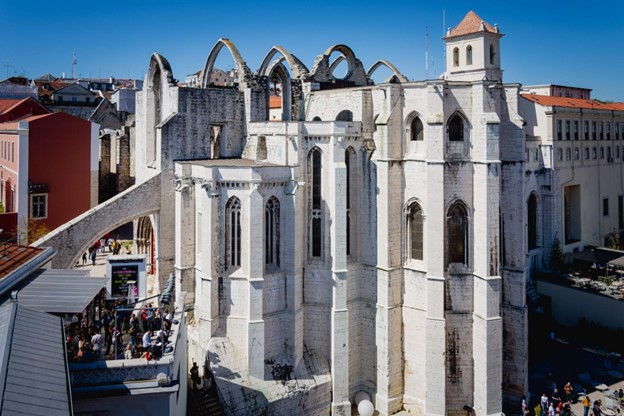
Carmo Convent is an ancient monastery that was built in 1389. It is one of the oldest religious sites in the city and a prominent symbol of Portugal’s past.
The convent contains a variety of interesting artifacts and artwork, including pieces from the 15th-century Baroque period. You can explore the grounds, which include an impressive cloister with Gothic arches and a tranquil garden perfect for peaceful reflection.
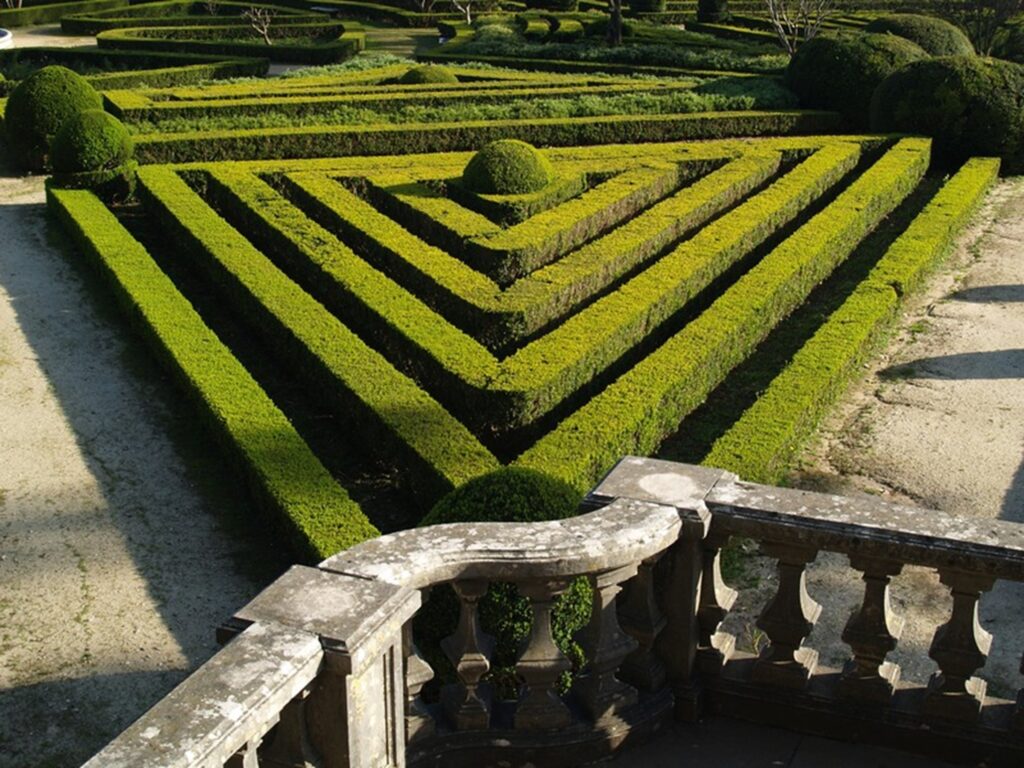
Jardim Botanico da Ajuda
Take a stroll through the beautiful gardens of Jardim Botânico da Ajuda, which is situated in the Parish of Ajuda. This tranquil park is home to various species of plants and flowers that will delight any nature lover. Among the garden’s highlights is a 400-year-old Madeiran dragon tree. You can also find the Palácio Nacional da Ajuda – an impressive 18th-century palace that was once the residence of Portugal’s royal family.
Bairro Alto
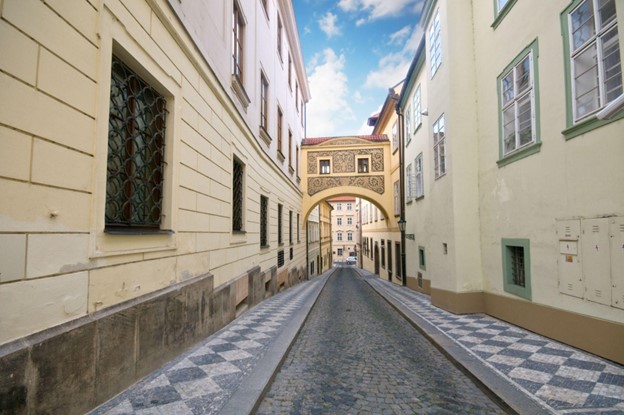
From Jardim da Ajuda, head to Bairro Alto, a vibrant neighborhood in Lisbon’s heart. It has narrow cobblestone streets, colorful buildings, and bustling cafes and restaurants. Whether you’re looking for great food, music, or nightlife, Bairro Alto has something to offer every visitor. During the day, explore its winding alleys and discover hidden gems like traditional shops selling embroidered fabrics or art galleries showcasing local talent. At nightfall, this area transforms into one of Lisbon’s liveliest spots, with bars spilling onto the street full of people enjoying drinks and dancing to upbeat tunes until late in the evening.
There are good places to eat dinner also. Enjoy a meal in one of the many traditional restaurants located throughout Bairo Alto and savor some fresh seafood dishes or renowned Portuguese wines. Fidalgo serves traditional Portuguese dishes to accompany the wines. At Sinal Vermelho, you can choose from a wide selection of Portuguese dishes and vegetarian options. The casual and relaxed atmosphere lets you enjoy the view with tables outside.
With its wide variety of beautiful parks, stunning mountain trails, and countless opportunities for outdoor adventure, Lisbon is the perfect place to get active. You can easily keep your body in shape while still having fun! From walking the cobblestone streets of Alfama to climbing the hills of Bairro Alto, there’s no shortage of ways to explore this beautiful city and get some exercise at the same time. Plenty of parks and gardens offer the perfect opportunity to stretch, jog, or work out. If you’re feeling adventurous, you can try stand-up paddling in the Tagus River or take a surf lesson at one of Portugal’s world-renowned beaches. No matter what activity you choose, there is something for everyone in Lisbon.
Day 2: Explore Lisbon Unesco Heritage Sites and Museum
Start your day 2 with a tour of the magnificent Jeronimos Monastery, followed by a visit to the Maritime Museum, the Monument of Discoveries, and a stop by the breathtaking beauty of Belem Tower.
Jeronimos Monastery
Top on your list is Jeronimos Monastery, an incredible piece of architecture worth visiting. It was built in the early 16th century; this monastery was once home to monks and royalty alike, who appreciated its beauty.

Today it stands as a testament to Portuguese culture and history, with its ornate design and intricate details that make it truly unique. The monastery has been designated as a UNESCO World Heritage Site for its cultural importance and exquisite craftsmanship, making it one of the must-see destinations in Lisbon for any traveler looking for an unforgettable experience.
The must-see places:
- Refectory Hall
- Tomb of Vasco da Gama
- Chapter House
- South Façade/South Portal
- Church of Santa Maria de Belém
It will take you 1-2 hours to explore the monastery. The Jeronimos Monastery’s main chapel is free to enter, but the entrance to the monastery is € 10.
Pro tip:
- Prebook to skip the line ticket
- You may want to book a 3-hour guided walking tour of Belem
Maritime Museum
While waiting for the best time to visit the Belem Tower, head your way to the Maritime museum and explore the place for 1-2 hours. A World of Discoveries awaits you at the Maritime Museum as it highlights the importance of the experience and knowledge that pioneering Portuguese navigators contributed to the world.
The Monument of Discoveries
Take the time to see the stunning Monument of Discoveries in Belem that honors the Portuguese explorers who changed the world. Located on the Tagus River in Lisbon, it is an impressive reminder of Portugal’s important role in the Age of Discovery. The monument was designed by

Cottinelli Telmo and was inaugurated in 1960 to celebrate 500 years since the death of Prince Henry, the Navigator.
It is composed of a vast stone caravel with enormous sails pointing towards the sky and standing over 52 meters tall. On both sides of this structure are two statues symbolizing Portugal’s main discoveries: America and India. Alongside them are 32 other figures representing famous Portuguese explorers. The monument is a beautiful piece of architecture that perfectly captures the spirit of exploration and adventure.
Belem Tower
Belem Tower is best seen in the late afternoon as it is the best time to witness a beautiful sunset at the top of the tower. The Belem Tower is only 2.3 kilometers from the monastery which is only a 10-15 minute walk away. The Tower has been declared a UNESCO World Heritage site and one of the main symbols of Lisbon’s tourism industry.

The tower was built between 1514 and 1521 as part of a defense system at the mouth of the Tagus River. It served as a fortress and lighthouse, helping ships enter the harbor safely. Today, it is a popular tourist attraction and reminds us of Portugal’s seafaring past. Visitors can climb to the top of the tower for stunning views over Belem or explore the interior of the fortification, which includes two museums dedicated to its maritime history. Explore the place for 2-3 hours, and don’t forget to visit the must-see places in the tower.
The must-see places:
- The Spiral Staircase
- Lower Battery
- The Governor’s Chamber
- The King’s Chamber
- The Tower
Neighboring Jeronimos Monastery is Belem’s famous Pasteis de Belem Custard. These egg tarts, a favorite among locals and tourists alike, have been served at the same restaurant since 1837. The secret recipe is reportedly locked away in a vault, adding to their allure! Make sure you arrive early, as this spot can get quite busy. After your sweet treat, head to Lisbon’s nightlife spot. Whether you’re looking to have a casual night out or just want to grab a drink with friends, there are plenty of bars and restaurants in the area. If you’re feeling brave, why not try your hand at a Fado performance? Lisbon’s traditional music is sure to be an unforgettable experience.

Day 3: Visiting Lisbon’s Neighborhood
Lisbon is a city full of grand architecture, a vivid culture, and incredible places to explore.
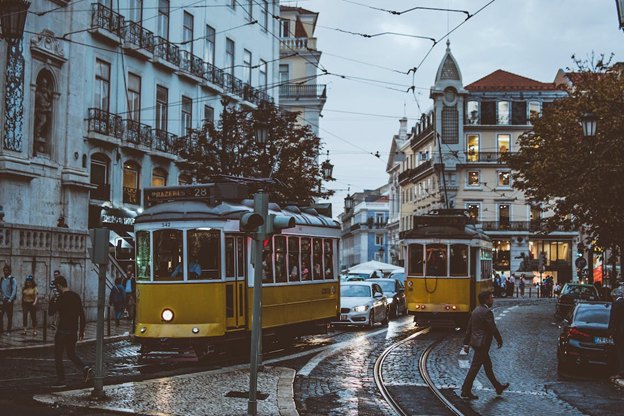
Alfama
One such place is Alfama – Lisbon’s oldest neighborhood and its historical heart. It is filled with winding alleyways and steep cobblestone streets. It holds some of the city’s most beautiful mosaics, churches, plazas, and restaurants. Stroll down small cobblestone streets and feel as if you have been transported back in time. From the winding alleyways of Mouraria to the iconic stairs of Calçada Do Figo, there’s something for everyone in Alfama. Whether you’re looking for an authentic taste of Lisbon or just a fun afternoon of exploring, Alfama is the perfect place to start your journey.
Alfama is home to some of Lisbon’s most iconic landmarks, including the majestic São Jorge Castle and its breathtaking views over the city skyline. The vibrant Fado music scene of Alfama is also renowned across the world. Many restaurants and bars offer live performances so that you can experience this unique Portuguese sound firsthand.
The maze-like streets of Alfama are lined with shops, cafes, and markets that offer some of Lisbon’s best shopping experiences. From handmade pottery to artisanal food stalls, you can find something unique to take home with you. As the sun sets, Alfama becomes alive with street vendors selling everything from souvenirs to traditional dishes – perfect for a romantic evening stroll or an after-dinner snack.
Monastery of Sao Vicente de Fora
Near Alfama, heading to the Monastery of Sao Vicente de Fora is an awe-inspiring experience. The building and its structures are an incredible example of sixteenth-century architecture, situated high on a hill overlooking Lisbon’s Alfama district. The monastery’s facade comprises ornate baroque-style sculptures and a grand entrance with two bell towers. Inside, the monastery is a maze of cloisters and intricately decorated chapels, making it easy to see why this building has been designated as a World Heritage Site by UNESCO.
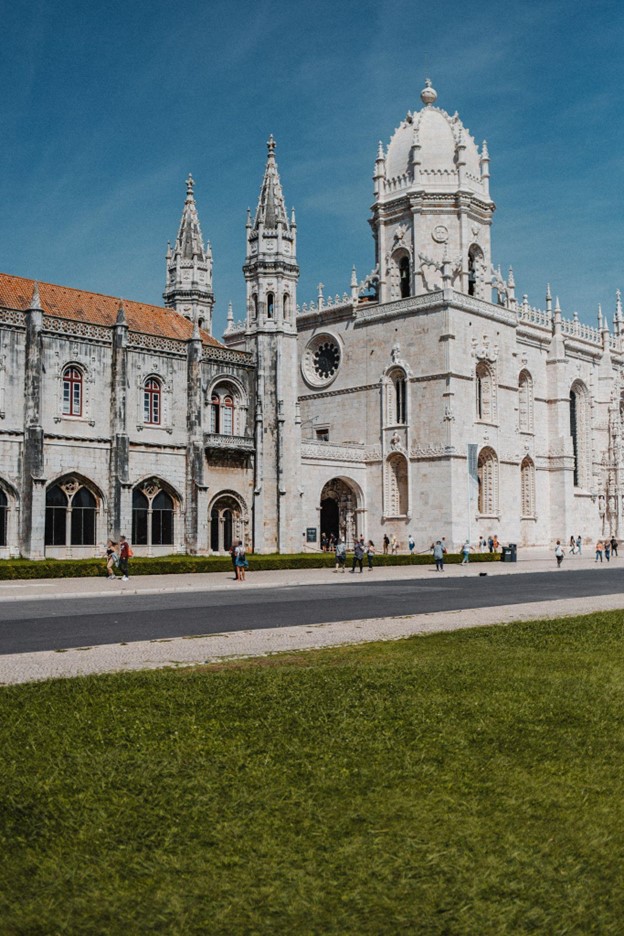
The courtyard of Sao Vicente de Fora offers breathtaking views out over Alfama and Lisbon’s Castelo de Sao Jorge. Here, visitors can also explore the extensive museum, which houses a large collection of ancient artifacts and religious artworks from the sixteenth century to the present day. The monastery is also home to an impressive library that contains rare manuscripts and books dating back hundreds of years.
An absolute must-see when visiting Lisbon, Sao Vicente de Fora is a hidden gem that should not be missed. Whether you’re looking for a day of cultural exploration or simply want to take in the sights and sounds of this incredible building, Sao Vicente de Fora will leave you with unforgettable memories.
Castelo de Sao Jorge
Visiting Castelo de Sao Jorge is an experience that should not be missed when you are in Lisbon. Perched atop one of the city’s seven hills, this majestic castle offers spectacular panoramic views of the city, Tagus river, and far beyond. It was once a Moorish fortress, later becoming a royal residence in the Middle Ages. Its walls are home to many legends and stories, making this an ideal place for a romantic stroll or an educational trip.
The classic way to get up to the castle of Sao Jorge is to take Tram 28, take a tuk-tuk, or you can take a leisurely stroll up the hill. Many visitors enjoy walking up the cobblestoned street, which offers some of the best views of Lisbon’s rooftops and terracotta-tiled houses. As you make your way to Sao Jorge Castle, be sure to look for plaques placed on buildings along the way that explain the area’s history. Once you reach the castle, marvel at its ramparts and towers that have stood for centuries. Take your time to explore every corner of this historical site, as it has much to offer – from its ancient battlements and walls to its breathtaking views of Lisbon’s skyline.
Inside the castle is a small archaeological museum that houses some of its most precious artifacts, including coins from different eras and weapons used by the defenders. There is also a café, where visitors can take a break and enjoy some refreshments while admiring the stunning views. For those who are feeling adventurous, you can even explore the secret passageways and underground tunnels that past castle occupants used!

Timeout Market
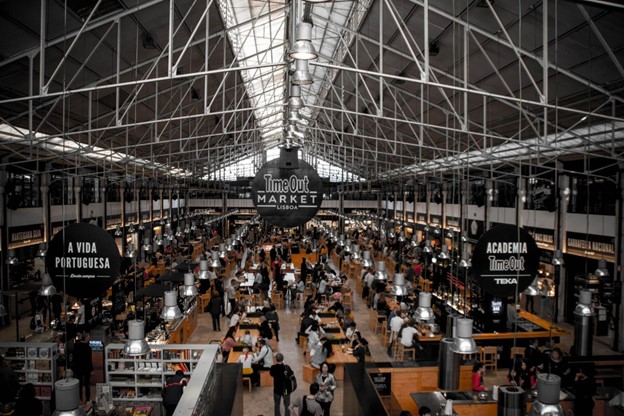
Head to Timeout Market for a sumptuous dinner. Visiting Timeout Market in Lisbon is an experience like no other. Located in the historic Mercado de Ribeira in Cais de Sodre. This vibrant marketplace is full of exciting sights, smells, and sounds, making it a truly unique destination for visitors. The market offers various goods, from handmade jewelry to homemade food items. You can find something for everyone at this bustling marketplace, where the lively atmosphere and friendly vendors make it a fun experience. In addition to great shopping, Timeout Market has numerous restaurants offering traditional Portuguese cuisine and international dishes. Several bars and cafes are located in the market, making it an ideal place to relax after a long day of sightseeing. Visitors can also take advantage of the market’s cultural events, such as concerts and exhibitions, which offer a great opportunity to learn more about Lisbon’s vibrant culture.
Day 4: A Day Trip to Sintra
Sintra is a picturesque town nestled in the rolling hills of Lisbon, Portugal. On a sunny day, a day trip to Sintra is a must for any visitor to the area.

How to Get to Sintra from Lisbon?
Sintra is 30 minutes away from Lisbon.
- Guided Tour:
You can book a guided Sintra tour if you want to enjoy a hassle-free trip.
- By Train:
Getting from Lisbon to Sintra by train is by far the cheapest and easiest independent option. Trains depart from Lisboa Rossio station every 30 minutes and take 40 minutes. You can use your preloaded Lisboa Viva card to pay for the journey as you would for public transportation.
- Rent a Car
If you plan on exploring beyond Lisbon, it makes sense to rent a car. You can rent a car to get to Sintra. Driving to Sintra from Lisbon is about 30 minutes to get to the center.
The first port of call when visiting Sintra is Palácio da Pena, a former royal palace that is now a national monument. Dating back to the 19th century, this palace is famous for its beautiful architecture and vibrant colors. From here, you can take in stunning views of the surrounding landscape and enjoy a leisurely stroll through the gardens.

Next on your itinerary should be Quinta da Regaleira, an estate that dates back to the 19th century. This estate is home to some of Europe’s most incredible and mysterious gardens and various sculptures and monuments. The highlight here is the Initiation Well – an underground network of tunnels and grottos that are said to have hidden secret meanings.
After exploring these two sites, your next stop should be the Palácio de Sintra. This palace dates back to the 15th century and is considered one of Portugal’s finest examples of romantic architecture. Don’t miss out on a visit to its beautiful gardens, as well as its incredible tapestries and furniture collections.
Finally, end your day with a visit to the picturesque village of Sintra. Here you can savor some delicious local cuisine, explore its quaint cobblestone streets and browse various shops selling traditional Portuguese handicrafts.
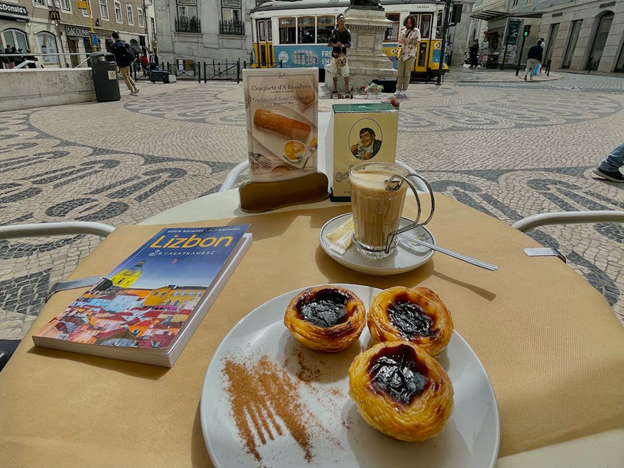
Back to Lisbon
After a jam-packed day tour, it’s time to return to Lisbon and enjoy your last night’s stay in the city.
There are lots of good places to enjoy your dinner. One is LX Factory. It is a unique and vibrant place located in the Alcântara neighborhood. The LX Factory is an old industrial complex that has been transformed into a creative hub. It comprises artist studios, galleries, restaurants, cafes, and workshops packed into a vast area filled with lush greenery and old train tracks. Here you will find some of Lisbon’s most innovative and inspiring places, focusing on creativity and design. Whether you’re looking for great food, creative inspiration, or just want to enjoy the atmosphere, you’ll find it all here.
Alternatively, you may want to book a food tour or a wine and tapas tour on your last night.
Insider Tips When Visiting Lisbon:
- Wear comfortable footwear as you will do a lot of walking
- Make sure you wear modest and comfortable clothing when visiting a monastery.
- The best month to visit are: March to May and September to October
- Credit cards are accepted in most places
- Purchasing a Lisboa Card will save you money and waiting time when visiting the most popular sites.
There you have it. I hope you enjoy my Lisbon itinerary for 4 days. I recommend joining one of Lisbon’s popular tours if you want to explore the city in more detail. Visit our website to find more exciting itineraries at some of the most popular destinations around the globe.

